Sony STR-AZ3000ES
Couldn't load pickup availability
Free Shipping On All Orders, No Minimums.
We offer free 2-day shipping on most products within the continental US.
Weekdays - Orders placed by 2pm EST ship same day. Orders placed after 2pm EST will ship the following business day.
Weekends - Orders placed on Saturday and Sunday will ship Monday.
Orders requiring motor freight delivery may take more than two business days. Once your order has shipped, you'll receive a shipping confirmation email with a tracking number for easy tracking.
Orders that contain items that are currently backordered, special order, or out of stock will ship complete once all items are in-stock unless otherwise requested.
If you need it faster, you will have the option of choosing a quicker shipping option when you checkout on the website.
At this time, we do not ship internationally and orders to Hawaii and Alaska may incur an additional shipping charge. Please contact us at 888.899.8776 or email support@audioadvice.com to confirm.
Rerouting and Address Changes
We cannot make ANY address changes once an order is placed. If you are unable to accept delivery of your package as ordered, we will need to cancel your order, return the package to sender and have you replace your order through our website.
Keep the Box
We suggest you keep the shipping box or boxes for at least 30 days. It is actually a great idea to keep boxes for audio products for the life of the product. Having the box and all packing will increase the trade-in value should you decide to move up and they are handy to have should you ever need to send the unit in for repair.
How To Receive a Motor Freight Order
The trucking company will contact you to schedule a convenient time to deliver the order. Please note that you must be present for delivery.
Visually inspect the box to make sure you see no signs of damage. If you notice any damage at all, take some pictures with your phone and make a note of them on the delivery receipt the driver will ask you to sign. If it is obvious that the product is damaged, please refuse the order and contact us immediately at 888.899.8776 or email support@audioadvice.com.
Open your box as soon as possible and inspect the product for damage and contact us if you find anything wrong.
uShip In-Home Delivery
Due to current concerns surrounding COVID-19, uShip is able to offer THRESHOLD SERVICE ONLY at this time. To ensure everyone’s safety, uShip is advising carriers to refrain from making room-of-choice deliveries. Threshold service consists of the shipment being brought into the first door of the address or the lobby of an apartment/condo, and does not include set-up, installation, assembly or debris removal.
What to Expect: Most oversized items will be delivered within 2-3 weeks. Your carrier will place your item inside the first door of the address or the lobby of an apartment/condo.
Appointment Scheduling: Your delivery partner will call 24-48 hours prior to delivery to arrange an appointment window.
How to prepare for in-home delivery:
- Determine the clearest path from the street to your home
- Measure entrances and hallways to ensure your item will fit
- Remove any wall hangings or clutter to ensure a clear path and to prevent damages
- Remove old furnishings to allow placement for your new piece
Check your furniture for damages: We rarely expect damaged furniture, but in the instance it does happen, we have you covered. Once your item’s packaging is removed, check for any damages that may have occurred in transit. Take pictures of any damages and notate appropriately on the delivery receipt. Keep possession of the damaged piece and contact us via phone or email and we’ll start the process to repair/replace your new piece of furniture. For uShip customer support, please call 800-698-7447.
At Audio Advice, we pride ourselves on customer satisfaction. We'll bend over backward to make sure you're 100% satisfied and we won't accept anything less. We offer 30-day hassle-free returns and personalized service from real, live people.
If an item doesn't meet your expectations, you may return or exchange it in its original condition and packaging within 30 days for a full refund, minus shipping fees. Items shipped back in like new condition through standard shipping carriers will only incur a flat fee of $15 to return. If the items were initially shipped through free scheduled delivery via motor freight (commonly referred to as LTL), returning them will result in return shipping fees starting at $150. These items include but are not limited to, oversized items such as TVs, certain subwoofers, floorstanding speakers, furniture, and most items weighing over 75 pounds. Return fees will also apply for exchanges. We want to treat your system as if it is our own and want you to be completely satisfied with your purchase.
Please see the instructions below. We only accept returns for any product purchased directly from our website. If merchandise is not returned in its original condition or is missing packaging, manuals, accessories or other parts, or the resale value of the product has been impaired, a partial refund will be given and calculated on a case-by-case basis.
Non-Returnable Items
The following items cannot be returned or cancelled:
- Special/Custom Order Items
- Open Box Products
- Gift Cards
- In-ear headphones cannot be returned once the packaging has been opened due to personal hygiene reasons. Please contact our customer care team if you'd like help choosing.
-
Turntables With a Broken Stylus: All turntables ship out with the stylus intact. If you return a turntable or phono cartridge with a broken or missing stylus you will be subject to a return fee. Please be careful when setting up your turntable and contact us with any questions.
Is It Easy To Return An Item?
Yes, simply give us a call at 888.899.8776 or you can email our support team at support@audioadvice.com. Many times our team of experts can help figure out why the product might not be working like you expected and get things fixed over the phone, so don’t be surprised if we ask a few questions, we love troubleshooting!
If our tech help can not make you happy, we will email over a return shipping label with a Return Number.
Hopefully, you saved all of the original item’s box and packaging inserts. You will want to pack back up your return or exchange in the same way it came out of the original box. Once you have everything packaged correctly, tape the box on the top and bottom to assure it stays together. If Audio Advice shipped the item to you inside a second box, it's a good idea to use that same extra box to help prevent damage on its way back to us. To avoid it accidentally coming back to you, use a magic marker to cross out the old shipping label or just tear it off.
The return shipping label we send you will have our address on it, just make sure you take the box to the right shipper (UPS, FEDEX, or USPS) as per the label.
If you are close to one of our stores, please let us know if it is more convenient for you to return it to us directly. You will still need to get a return number by contacting us and shipping and/or restocking charges may apply.
When Will I See My Refund?
It usually takes around 7-14 days for the refund to show up on the payment method you used. We do inspect all returns for damage and accuracy of the item inside the box before issuing a refund. Some items may be subject to shipping and restocking fees.
Can I Exchange My Purchase For Something Different?
Sometimes those big speakers just don’t fit in the room or you might have bought a small subwoofer and later found out you’d love a bigger one. If you would like to make an exchange within 30 days of receiving your item, just give us a call at 888.899.8776 or email support@audioadvice.com and we will help work out the details. Additional shipping charges and return costs may apply.
How Do I Cancel An Order?
If the item has already shipped out or is a special order item, it is not possible to cancel the order. Please contact us at 888.899.8776 or email support@audioadvice.com to start the return process.
What If I Find Shipping Damage?
We need to know right away about any shipping damage. Please contact us at 888.899.8776 or email support@audioadvice.com within 48 hours of your delivery so we can get the ball rolling on making things right. It’s very helpful to take some pictures and email them to us if possible.
Can I Refuse A Shipment?
You can, but unless the item is damaged, shipping and restocking fees will be deducted from your refund. If your item arrives damaged and you are lucky enough to be there, snap some quick pics and refuse the order. Then contact us so we can get a replacement on the way.
What Happens If My Order Is Defective?
This is actually pretty rare, most consumer electronics work fine out of the box 99.9% of the time. We’d like for you to contact us first by calling 888.899.8776 or email support@audioadvice.com so we can help get to the bottom of things. If your item is indeed defective during the first 30 days, we can usually exchange it for a new, replacement unit.
What About Service After 30 Days?
Audio Advice has a great relationship with all of our brands and can help you with warranty service by the brand after our 30-day guarantee period. Even after the warranty expires, we can arrange for service by the brand on products purchased from Audio Advice. Just call 888.899.8776 or email support@audioadvice.com.
How Do You Determine A Restocking Fee?
You may not believe it, but sometimes we receive items back that were put in the box with zero packaging and are completely destroyed or are missing many of the pieces that came with the item. We also track serial numbers and will get back different serial numbers. We’ve even seen different items than what we shipped out be returned. However, it’s very important to package your return properly so that nothing goes missing or gets damaged in shipping, which will result in a restocking fee or even no refund at all. If a product is opened and the market value of the product is reduced, then a restocking fee may be applied to the cost of restocking and the reduced market value of the product. The bottom line is if you treat us fairly, we will do the same.
Audio Advice strives to provide industry-leading support and service while also maintaining the lowest prices available on products for our customers. We work hard with our vendors to bring our customers the best products at each price point. As a part of that process, we work with our vendors to provide the lowest pricing in our stores and on our website.
Our prices should always be the same as any other authorized dealer, including big-box retailers and major online retailers.
If you believe that you have found a lower advertised price from a legitimate authorized seller, call us and let us know so we can make sure we can correct any inadvertent error on our side. As a matter of policy, we update our prices automatically if a vendor changes its authorized pricing policies, so we generally have the best prices all the time. Increasingly, there are knock-off copies of products online, usually sold by non-authorized dealers.
Please be sure that the item meets the following conditions:
- The item is brand new, in stock, and available for purchase
- The item has the identical model number, color, etc as the item on our site.
- The seller is an authorized dealer
As always, our goal is to provide a terrific customer experience, including industry low prices. We appreciate your support.
Overview
The High Notes

9 Channels of Audiophile Level Power

Incredible Surround Sound Effects

Built Like a True Tank
Sony STR-AZ3000ES 9.2 CH 8K A/V Receiver
When you jump from the AZ1000 to the STR-AZ3000 you get a unit that weighs over twice as much as the AZ3000! It comes in at just shy of 43 pounds, which is incredibly massive for a 9-channel AVR. With the AZ3000 you move up to 110 watts per channel, but there is more to it than the additional power. The top three models all have a far superior power supply and amplifier section. These units can produce serious sound as we found from our listening tests with the AZ5000. You will not have any issue pushing even hard-to-drive speakers with these models.
You will step up to 4 8K inputs along with 2 4k. It also adds one more analog input for a total of 4 with 2 Toslink and 1 Coax digital.
For automation, it adds a trigger output you could use for a drop-down screen.
With 9 powered channels you could do our most popular Dolby Atmos configuration of 4 Atmos height speakers along with a pair of surrounds, then turn on Sony’s Phantom surround tech to simulate 11 channels. Channels 8 and 9 give you the same great flexibility as you get in the AZ1000 for systems where you are not using all 9 channels for your home theater.
We do wish Sony would have put 11 channels of processing on board with preamp outs so you could just add a power amp later on down the road to take it to 11, but that is one good reason to step up to the next model, the STR-AZ5000ES.

Sony ES Receiver Audio Features
First, we like the fact all of these are rated with the FTC power spec for both channels driven from 20-20,000 Hz at a low distortion number. Sony has made the jumps from each model very logical with the AZ1000ES starting out at 7 powered channels and maxing out a whopping 13 powered channels for the AZ7000ES.
All four have Bluetooth, Wi-Fi, Chromecast built-in, Spotify Connect, and Apple AirPlay 2. Google Assistant works with them all and they all now have the “Works with Sonos” official certification for seamless integration with a Sonos whole house music system.
You can set them up using a web interface, the great on-screen display, or just the front panel.
For immersive surround they all support Dolby Atmos and DTS:X. To help those who may not want to run cables for some speakers, they all support adding Sony’s wireless SA-RS3S and SA-RS5 Wireless Surround Speakers, as well as SA-SW3 & SASW5 Wireless Subwoofers. While we feel you would much prefer to add speakers that match your main brand of speakers, this is a pretty cool option for apartments or living spaces where it is impossible to run wiring for surrounds and you could use either of the wireless surround speaker options to at least get more immersion than you would without them.
In that same vein, they also all let you use the speakers in a compatible Sony TV for your center channel. We would not really recommend this unless you do not have any space for a true center channel speaker.
They also all have a phantom rear speaker mode that you can turn on to simulate rear speakers. This is not a simulation of your main surrounds, but the rears in a 7-channel bed layer system.
Another neat feature Sony receivers have had for a while is an adjustment if your fronts, center, or both are in the ceiling. This uses DSP to pull the image down so it sounds less like an in-ceiling speaker.
Finally, they all have a new feature called center channel lift. You will need to have both front heights turned on for this, but once we thought about this one, it's another reason all those distance measurements make perfect sense. Our favorite home theater systems have the center speaker directly behind an acoustically transparent screen so the voices sound like they are coming right out of the screen but most people have to place their center speaker under the TV or screen. When you turn on the center channel lift it will use both your center channel and front height speakers to effectively move the center channel image up higher. More on how this actually worked in the performance section.

Sony ES Receiver Video Features
For video, you get 8K & 4K/120Hz HDMI Connectivity with HDMI 2.1 and HDCP 2.3 with support for HDR, Dolby Vision, HDR10, Hybrid Log Gamma, and IMAX Enhanced. Gamers will love that the 4K/120 inputs support ALLM and VRR for the best in low latency gaming.
The on-screen menu for setting up the inputs is a home theater geek's dream come true. It is a big grid that lets you assign video and audio to any input with the ability to create similar ones using the same video but different audio. This is cool for those of you who like to watch sports but hear the local announcer. They also have offset levels and default surround modes for each one. Plus you can store two configurations. You can take lip sync up to 300 milliseconds and assign this to each input as well. In another pretty neat touch, you can turn on or off the subwoofer for each input and even give it a 10db boost for that input if you wish.
Tips & Tricks: How To Perfectly Set Lip Sync Calibration In Your Home Theater
Then you’ll get to the speaker settings which is by far the best setup we have seen. Here is where you will be scratching your head wondering why you have to input all these numbers. Like all home theater receivers, you input the distance from your speakers to your main listening position. Then, you jump to another screen where you input the speaker distance from the screen. Next, you go to another setting where you input the distance each speaker is from the floor. You also input the distance your ears are from the floor and the ceiling height of your room. All this extra data allows Sony’s Digital Cinema Auto Calibration IX and 360 Spatial Sound Mapping to work more precisely. In theory, this should allow them to better place the immersive objects within the surround field.
Another thing we love in the interface is the visual graphics under the speaker pattern section. With all of the possible speakers out there that can be used for height and surrounds, menus can get confusing when you have to choose the type without a visual reference. With these models, Sony makes it perfectly clear whether you have an in ceiling speaker, an upward firing speaker, or a free standing speaker mounted on the ceiling aimed at the listening area. The menu lets you set up any possible combination of these. This just takes away any possible confusion, which is great!
Elevated sound quality and powerful amplification that meets ES standards
Elevated sound quality and powerful amplification that meets ES standards The STR-AZ3000ES delivers cinema-like surround sound and crystal-clear music reproduction with powerful amplification.8K & 4K/120 HDMI Connectivity
Enjoy the latest HDMI technology with support for 8K & 4K/120 video sources.1,3 Equipped with four 8K HDMI inputs and two outputs the STR-AZ3000ES is capable of delivering the most stunning picture quality and amazing clarity.2Support for the most advanced object-based audio formats
With support for Dolby Atmos®, Dolby Speaker Virtualization, DTS:X®, and DTS Virtual: X the STR-AZ3000ES delivers a truly elevated object-based surround-sound experience.360 Spatial Sound Mapping
Experience true immersion. Sony’s exclusive 360 Spatial Sound Mapping technology reproduces a physical sound field that can adapt to your environment and create an experience that feels like a movie theatre or concert hall.12Digital Cinema Auto Calibration IX
A new technology developed by Sony, Digital Cinema Auto Calibration IX precisely corrects the distance, angle, sound pressure, and frequency response of each speaker that’s connected to the STR-AZ3000ES to create the ideal sound field for any home theater setup.Supports Dolby Vision, HDR10, and Hybrid Log Gamma, and IMAX Enhanced
Enjoy dynamic, realistic picture quality with support for exciting HDR formats like Dolby Vision, HDR10, Hybrid Log Gamma, and IMAX Enhanced.5,7,8“Works with SONOS”
From the SONOS app you will be able to turn on your A/V Receiver, switch to the designated input source for playback, and control the volume of your A/V Receiver.4,5Easy Listening
Listen to all your favorite tracks. The STR-AZ3000ES supports audio streaming via Bluetooth®,10 Wi-Fi, Chromecast built-in,6 Spotify Connect, and Apple AirPlay®.5Voice Assistant Compatibility
Connect to your home’s other devices, and use voice control to operate your receiver with Google Assistant.7Roon Tested
Enjoy seamless integration with your Roon system for full access to all your music—including your digital files and streaming services—all in one place.5Compatible with Sony Music Center app
Control the STR-AZ3000ES from your mobile device for operations like source selection, zone control, sound field control, volume control, media playback, and voice assistant setup.5Center Speaker Lift Up and Acoustic Center Sync
Enhance your sound multiple ways: Center Speaker Lift Up raises the sound from the center speaker to match what’s on the TV, Acoustic Center Sync matches the audio to your compatible BRAVIA TV.11Support for integration with leading home control systems6
With support for the leading control and remote monitoring systems like Control4, Savant, Crestron, and OvrC the STR-AZ3000ES is built for integration.5Flexible setup options
Installing the STR-AZ3000ES is easy. Setup can be performed either via the front panel or through the onscreen Graphical User Interface (GUI).USB Front Input with settings save option
Using the front mounted USB, you can easily apply system updates and during setup, save all receiver settings to a flash drive for backing up and porting over to another unit to replicate settings.RS232C Port
RS232C port for control system configuration.Zone 2 & Zone 3
Flexible multi-zone distribution capability.Go Wireless
Sony’s SA-RS3S & SA-RS5 wireless rear speakers and SA-SW3 & SA-SW5 wireless subwoofers (Sold sep.) are compatible with the STR-AZ3000ES. Two subwoofers of the same model may be connected simultaneously to the receiver.DSEE Ultimate
Using AI-based technology, DSEE Ultimate accurately upscales audio to near-high-resolution sound quality.HDMI 2.1
While enabling higher quality video output and reduced latency from input devices like game consoles, HDMI 2.1 also provides support for Auto Low Latency Mode (ALLM), Variable Refresh Rate (VRR).2,36 HDMI Inputs/2 Outputs
The STR-AZ3000ES has six HDMI inputs with four inputs supporting full 8K & 4K/120 video sources, and two HDMI outputs that also support full 8K & 4K/120 video sources.1,2,3Newly Designed Frame Beam Base Chassis
The chassis of the ES model has been fundamentally revised: the overall thickness has been increased for improved rigidity, and the structures of the transformer base and other weight-bearing parts have also been redesigned to improve the instantaneous power and crispness of the sound, when compared to a conventional chassis.Offset Screw Position Foot
Designed with an offset screw position to both eliminate the resonance point and avoid frequency-specific, vibration-inducing resonance transmission to and from the transformer, the foot also contains additional ribs for increased rigidity and improved resonance control.Refreshed Digital Circuit Board
Metal ES-grade frames both secure the circuit board and protect it from vibration caused by speaker sound pressure. The varying fin length of the integrated heat sink reduces audible resonance uniformity while also shielding delicate circuitry from noise.Redeveloped digital section
The new digital section enables all signal processing to be performed on a single chip while also providing lower impedance, increased capacitance, and better stability.New DAC enables 32-bit operations
Digital PCM signal input is processed at 32-bit and converted to analog by the DAC, while DSD signal input during direct mode is natively input to the DAC and converted to an analog signal.Improved analog power for DAC
The DAC analog power supply uses a low-noise power supply IC to ensure that hi-fidelity performance is achieved.Buffer amp for DAC
A new DAC analog output filter circuit was designed utilizing a JFET and op-amp improvement in noise floor. The phase rotation was shifted to a higher frequency, expanding the bandwidth and improving sound clarity for wide-bandwidth sources like high-resolution audio.Sony exclusive integrated circuit
A Sony-exclusive integrated circuit was developed to improve all amplification function on the STR-AZ3000ES. The pre-amp is independently connected to each individual amplifier channel, improving channel separation and reducing internal interference over more traditional cascading designs.Lead free ES solder
Applying years of sound engineering and testing experience, Sony has developed an ES-grade solder. A high-purity tin base combines with small amounts of specially chosen metal elements for a unique alloy mix that enables a quality signal and exceptional sound.Hi-Res Audio & 360 Reality Audio
Enjoy music the way the artists truly intended with High-Resolution Audio for crystal clear precision or discover a new way of listening with 360 Reality Audio for a truly immersive live concert or studio session experience.5 With the STR-AZ3000ES, your music comes to life like never before.Covered by Sony® ES 5-Year Limited Warranty
All ES-Series receivers come with a 5-year parts and labor warranty, and dedicated toll-free support staffed by trained product experts. (1-877-619-7669); Monday–Friday 10 a.m.–7 p.m. ET9Footnotes
- 8K: 7,680 x 4,320 pixels. Requires HDR compatible content from supported streaming services or HDR compatible content device connected via HDMI input (sold sep).
- Requires HDMI® cable sold sep.
- 4K: 3,840 x 2,160 pixels. Game title supporting 4K/120fps and/or VRR required.
- Sonos app required. Device must be connected to a power source, plugged into a SONOS® port, have the same Wi-Fi or hardline connection, and must have The SONOS® app. https://www.sonos.com/en-us/how-sonos-works
- 3rd party apps, network services, content, the operating system and software of this Product may be subject to individual terms and conditions and changed, interrupted or discontinued at any time and may require fees, registration and credit card information. Requires product to be connected to the wireless network. 360 Reality Audio requires subscription to compatible online music service and third party terms, conditions, account and fees may apply.
- Chromecast built-in compatibility dependent on app.
- User must connect to a Google account to use, including voice to activate linked apps.
- May require additional accessories. Check with your authorized dealer for details.
- For full terms and conditions please visit https://www.sony.com/electronics/support
- Interoperability and compatibility among Bluetooth® devices vary.
- BRAVIA Acoustic Center Sync mode works with the following models: Z9J series, A90J series, A80J series, X95J series. Product availability varies by country. Integrated UI works with the following models: Z9J series, A90J series, A80J series, X95J series, X90J series, X85J series, X80J series, A80K series, X90K series, Z9K series, A95K series, A90K series and X95K series.
- To use 360 Spatial Sound Mapping, it is necessary to run the auto calibration on the receiver using the supplied calibration microphone that comes with the receiver. 360 Spatial Sound Mapping can work with passive speakers and compatible wireless rear speakers (SA-RS3S & SA-RS5) but they must be connected to the receiver for the calibration.
| Amplifier | |
|---|---|
| Speaker Impedance | 4ohms-16ohms |
| Sound Field | 2ch Stereo, Direct, Auto Format Decoding, Multi Stereo, Audio Enhancer |
| Audio Features | |
| Sound Enhancement Technologies | Pure Direct, DSD Native Playback, Center Speaker Lift Up, In-Ceiling Speaker Mode |
| Auto Speaker Calibration | |
| Calibration Features | D.C.A.C. IX / D.C.A.C. EX / Advanced D.C.A.C. / D.C.A.C.: D.C.A.C. IX, Speaker Relocation: Yes, Phantom Surround Back: Yes, Automatic Phase Matching: Yes, Calibration Mic: Stereo |
| Custom Install & Control Features | |
| Zone2 Audio | 2nd A: Speaker(Variable) / Line (Variable, Fixed) / HDMI(Fixed) |
| IR Repeat (In/Out) | Yes(1/2) |
| Decoding Format for HDMI | |
| Decoding Format for HDMI | DSD: Yes (Up to 2.8MHz 5.1ch), LPCM: Yes (Up to 192kHz/24 bit 7.1ch), DTS HD MA / DTS HD HR: Yes/Yes, Dolby TrueHD/Dolby Digital Plus: Yes/Yes, DTS / DTS-ES (Matrix6.1 / Discrete6.1): Yes/Yes, DTS 96/24: Yes, DTS:X: Yes, Dolby Dual Mono: Yes, Dolby Atmos: Yes |
| Decoding Format for USB/Network Client | |
| Hi-Res Format | DSDIFF(DSD), DSF, WAV(LPCM), AIFF(LPCM), FLAC, ALAC |
| General Features | |
| GUI (Graphical User Interface) | Yes |
| Power Requirement | 120V 60Hz |
| Power Consumption | 440W |
| Auto Standby | Yes |
| Attachment | Calibration microphone, Calibration mic stand, FM wire antenna, AC power cord, Remote control, R03 (size-AAA) batteries, Front cover |
| Interface | |
| HDMI supporting HDCP2.2 In/Out | HDMI Input supporting HDCP2.2(Front): 6(0) HDMI Output supporting HDCP2.2: 2 |
| Input and Output Terminals | Composite Monitor Out: 2, Opt: 2, Coax.: 1, Analog Audio In: 4, Pre Out (Subwoofer): 2, USB Front(ver) / Rear(ver): 1/0, Ethernet Port (Power over Ethernet): 1(0) |
| Speaker Output Terminals | Front A, Center, Surround |
| Network Connectivity | |
| Network Features | Bluetooth Receiver, Bluetooth Transmitter, Wi-Fi |
| Spotify Connect | Yes |
| Size & Weight | |
| Dimensions (W x H x D) | 430x194x440mm |
| Weight | 19.0kg |
| Tuner Features | |
| FM/AM | Yes/- |
| Preset Channel (Sirius/XM/FM/AM) | TTL30 (30/0) |
| Video Features | |
| A/V SYNC | Yes(Variable) |
| 4K Output | HDMI Video Output Capability: 8K, 4K, 1080p, 1080/24p, Deep Color (up to 36 bit), Triluminous Color (xvYCC) |
| 4K 60p 4:4:4 Support | Yes |
| 3D over HDMI | Yes |
| HDR (High Dynamic Range) | Yes(HDR10, Hybrid Log Gamma, Dolby Vision) |
| Audio Return Channel | Yes |
| BRAVIA® SYNC™ (CEC Control) | Yes (System Audio Control, System Power Off, RC Pass Through, Language Follow, One-Touch Play) |
| HDMITM Pass Through | Standby Through: Yes |
Elevated sound quality and powerful amplification that meets ES standards
Elevated sound quality and powerful amplification that meets ES standards The STR-AZ3000ES delivers cinema-like surround sound and crystal-clear music reproduction with powerful amplification.8K & 4K/120 HDMI Connectivity
Enjoy the latest HDMI technology with support for 8K & 4K/120 video sources.1,3 Equipped with four 8K HDMI inputs and two outputs the STR-AZ3000ES is capable of delivering the most stunning picture quality and amazing clarity.2Support for the most advanced object-based audio formats
With support for Dolby Atmos®, Dolby Speaker Virtualization, DTS:X®, and DTS Virtual: X the STR-AZ3000ES delivers a truly elevated object-based surround-sound experience.360 Spatial Sound Mapping
Experience true immersion. Sony’s exclusive 360 Spatial Sound Mapping technology reproduces a physical sound field that can adapt to your environment and create an experience that feels like a movie theatre or concert hall.12Digital Cinema Auto Calibration IX
A new technology developed by Sony, Digital Cinema Auto Calibration IX precisely corrects the distance, angle, sound pressure, and frequency response of each speaker that’s connected to the STR-AZ3000ES to create the ideal sound field for any home theater setup.Supports Dolby Vision, HDR10, and Hybrid Log Gamma, and IMAX Enhanced
Enjoy dynamic, realistic picture quality with support for exciting HDR formats like Dolby Vision, HDR10, Hybrid Log Gamma, and IMAX Enhanced.5,7,8“Works with SONOS”
From the SONOS app you will be able to turn on your A/V Receiver, switch to the designated input source for playback, and control the volume of your A/V Receiver.4,5Easy Listening
Listen to all your favorite tracks. The STR-AZ3000ES supports audio streaming via Bluetooth®,10 Wi-Fi, Chromecast built-in,6 Spotify Connect, and Apple AirPlay®.5Voice Assistant Compatibility
Connect to your home’s other devices, and use voice control to operate your receiver with Google Assistant.7Roon Tested
Enjoy seamless integration with your Roon system for full access to all your music—including your digital files and streaming services—all in one place.5Compatible with Sony Music Center app
Control the STR-AZ3000ES from your mobile device for operations like source selection, zone control, sound field control, volume control, media playback, and voice assistant setup.5Center Speaker Lift Up and Acoustic Center Sync
Enhance your sound multiple ways: Center Speaker Lift Up raises the sound from the center speaker to match what’s on the TV, Acoustic Center Sync matches the audio to your compatible BRAVIA TV.11Support for integration with leading home control systems6
With support for the leading control and remote monitoring systems like Control4, Savant, Crestron, and OvrC the STR-AZ3000ES is built for integration.5Flexible setup options
Installing the STR-AZ3000ES is easy. Setup can be performed either via the front panel or through the onscreen Graphical User Interface (GUI).USB Front Input with settings save option
Using the front mounted USB, you can easily apply system updates and during setup, save all receiver settings to a flash drive for backing up and porting over to another unit to replicate settings.RS232C Port
RS232C port for control system configuration.Zone 2 & Zone 3
Flexible multi-zone distribution capability.Go Wireless
Sony’s SA-RS3S & SA-RS5 wireless rear speakers and SA-SW3 & SA-SW5 wireless subwoofers (Sold sep.) are compatible with the STR-AZ3000ES. Two subwoofers of the same model may be connected simultaneously to the receiver.DSEE Ultimate
Using AI-based technology, DSEE Ultimate accurately upscales audio to near-high-resolution sound quality.HDMI 2.1
While enabling higher quality video output and reduced latency from input devices like game consoles, HDMI 2.1 also provides support for Auto Low Latency Mode (ALLM), Variable Refresh Rate (VRR).2,36 HDMI Inputs/2 Outputs
The STR-AZ3000ES has six HDMI inputs with four inputs supporting full 8K & 4K/120 video sources, and two HDMI outputs that also support full 8K & 4K/120 video sources.1,2,3Newly Designed Frame Beam Base Chassis
The chassis of the ES model has been fundamentally revised: the overall thickness has been increased for improved rigidity, and the structures of the transformer base and other weight-bearing parts have also been redesigned to improve the instantaneous power and crispness of the sound, when compared to a conventional chassis.Offset Screw Position Foot
Designed with an offset screw position to both eliminate the resonance point and avoid frequency-specific, vibration-inducing resonance transmission to and from the transformer, the foot also contains additional ribs for increased rigidity and improved resonance control.Refreshed Digital Circuit Board
Metal ES-grade frames both secure the circuit board and protect it from vibration caused by speaker sound pressure. The varying fin length of the integrated heat sink reduces audible resonance uniformity while also shielding delicate circuitry from noise.Redeveloped digital section
The new digital section enables all signal processing to be performed on a single chip while also providing lower impedance, increased capacitance, and better stability.New DAC enables 32-bit operations
Digital PCM signal input is processed at 32-bit and converted to analog by the DAC, while DSD signal input during direct mode is natively input to the DAC and converted to an analog signal.Improved analog power for DAC
The DAC analog power supply uses a low-noise power supply IC to ensure that hi-fidelity performance is achieved.Buffer amp for DAC
A new DAC analog output filter circuit was designed utilizing a JFET and op-amp improvement in noise floor. The phase rotation was shifted to a higher frequency, expanding the bandwidth and improving sound clarity for wide-bandwidth sources like high-resolution audio.Sony exclusive integrated circuit
A Sony-exclusive integrated circuit was developed to improve all amplification function on the STR-AZ3000ES. The pre-amp is independently connected to each individual amplifier channel, improving channel separation and reducing internal interference over more traditional cascading designs.Lead free ES solder
Applying years of sound engineering and testing experience, Sony has developed an ES-grade solder. A high-purity tin base combines with small amounts of specially chosen metal elements for a unique alloy mix that enables a quality signal and exceptional sound.Hi-Res Audio & 360 Reality Audio
Enjoy music the way the artists truly intended with High-Resolution Audio for crystal clear precision or discover a new way of listening with 360 Reality Audio for a truly immersive live concert or studio session experience.5 With the STR-AZ3000ES, your music comes to life like never before.Covered by Sony® ES 5-Year Limited Warranty
All ES-Series receivers come with a 5-year parts and labor warranty, and dedicated toll-free support staffed by trained product experts. (1-877-619-7669); Monday–Friday 10 a.m.–7 p.m. ET9Excellent sound (better than Sony's soundbars)
Footnotes
- 8K: 7,680 x 4,320 pixels. Requires HDR compatible content from supported streaming services or HDR compatible content device connected via HDMI input (sold sep).
- Requires HDMI® cable sold sep.
- 4K: 3,840 x 2,160 pixels. Game title supporting 4K/120fps and/or VRR required.
- Sonos app required. Device must be connected to a power source, plugged into a SONOS® port, have the same Wi-Fi or hardline connection, and must have The SONOS® app. https://www.sonos.com/en-us/how-sonos-works
- 3rd party apps, network services, content, the operating system and software of this Product may be subject to individual terms and conditions and changed, interrupted or discontinued at any time and may require fees, registration and credit card information. Requires product to be connected to the wireless network. 360 Reality Audio requires subscription to compatible online music service and third party terms, conditions, account and fees may apply.
- Chromecast built-in compatibility dependent on app.
- User must connect to a Google account to use, including voice to activate linked apps.
- May require additional accessories. Check with your authorized dealer for details.
- For full terms and conditions please visit https://www.sony.com/electronics/support
- Interoperability and compatibility among Bluetooth® devices vary.
- BRAVIA Acoustic Center Sync mode works with the following models: Z9J series, A90J series, A80J series, X95J series. Product availability varies by country. Integrated UI works with the following models: Z9J series, A90J series, A80J series, X95J series, X90J series, X85J series, X80J series, A80K series, X90K series, Z9K series, A95K series, A90K series and X95K series.
- To use 360 Spatial Sound Mapping, it is necessary to run the auto calibration on the receiver using the supplied calibration microphone that comes with the receiver. 360 Spatial Sound Mapping can work with passive speakers and compatible wireless rear speakers (SA-RS3S & SA-RS5) but they must be connected to the receiver for the calibration.































 Home Theater
Home Theater Speakers
Speakers Tower Speakers
Tower Speakers
 Bookshelf Speakers
Bookshelf Speakers
 Center Channel Speakers
Center Channel Speakers
 Wall & Ceiling Speakers
Wall & Ceiling Speakers
 Surround Speakers
Surround Speakers
 Dolby Atmos Speakers
Dolby Atmos Speakers
 Subwoofers
Subwoofers
 Soundbars
Soundbars
 Speaker Stands & Mounts
Speaker Stands & Mounts
 Components
Components Home Theater Receivers
Home Theater Receivers
 Surround Sound Processors
Surround Sound Processors
 Power Amps
Power Amps
 Movie Sources
Movie Sources
 TVs & Projectors
TVs & Projectors Televisions
Televisions
 Projectors
Projectors
 Projector Screens
Projector Screens
 TV & Projector Mounts
TV & Projector Mounts
 Seating & Furniture
Seating & Furniture Home Theater Seating
Home Theater Seating
 Media Cabinets
Media Cabinets
 A/V Racks & Shelves
A/V Racks & Shelves
 Accessories
Accessories
 Acoustic Treatments
Acoustic Treatments Absorption Panels
Absorption Panels
 Bass Trap Panels
Bass Trap Panels
 Diffusion Panels
Diffusion Panels
 Acoustic Treatment Packages
Acoustic Treatment Packages
 Cables & Accessories
Cables & Accessories HDMI Cables
HDMI Cables
 Analog Cables
Analog Cables
 Digital Cables
Digital Cables
 USB Cables
USB Cables
 Speaker Cables
Speaker Cables
 Subwoofer Cables
Subwoofer Cables
 Power Management
Power Management
 Featured & Deals
Featured & Deals Best Sellers
Best Sellers
 Sale
Sale
 Home Audio
Home Audio Outdoor Speakers
Outdoor Speakers
 Portable & Bluetooth
Portable & Bluetooth
 Wireless Speaker Systems
Wireless Speaker Systems
 Computer Speakers
Computer Speakers
 Powered Speakers
Powered Speakers
 Integrated Amplifiers
Integrated Amplifiers
 Power Amplifiers
Power Amplifiers
 Stereo Preamplifiers
Stereo Preamplifiers
 Stereo Receivers
Stereo Receivers
 Streaming Media Players
Streaming Media Players
 Digital-to-Analog Converters
Digital-to-Analog Converters
 CD Players
CD Players
 Outdoor Entertainment
Outdoor Entertainment Outdoor Subwoofers
Outdoor Subwoofers
 Turntables
Turntables Manual
Manual
 Automatic
Automatic
 Phono Cartridges
Phono Cartridges Moving Coil
Moving Coil
 Moving Magnet
Moving Magnet
 Moving Iron
Moving Iron
 Mono
Mono
 Phono Preamps
Phono Preamps MC Compatible
MC Compatible
 MM Compatible
MM Compatible
 Record Cleaning & Care
Record Cleaning & Care Stylus Care
Stylus Care
 Cleaning Machines
Cleaning Machines
 Record Cleaning Fluid
Record Cleaning Fluid
 Record Sleeves
Record Sleeves
 Isolation Systems
Isolation Systems Turntable Setup Tools
Turntable Setup Tools
 Turntable Cables
Turntable Cables
 Record Weights
Record Weights
 Turntable Mats
Turntable Mats
 Headphones
Headphones In-Ear Headphones
In-Ear Headphones
 On-Ear Headphones
On-Ear Headphones
 Over-Ear Headphones
Over-Ear Headphones
 Wireless Headphones
Wireless Headphones
 Gaming Headsets
Gaming Headsets
 Headphone Amps & DACs
Headphone Amps & DACs Digital Audio Players
Digital Audio Players
 Smart Home
Smart Home Deals
Deals Limited Time Deals
Limited Time Deals Deals by Category
Deals by Category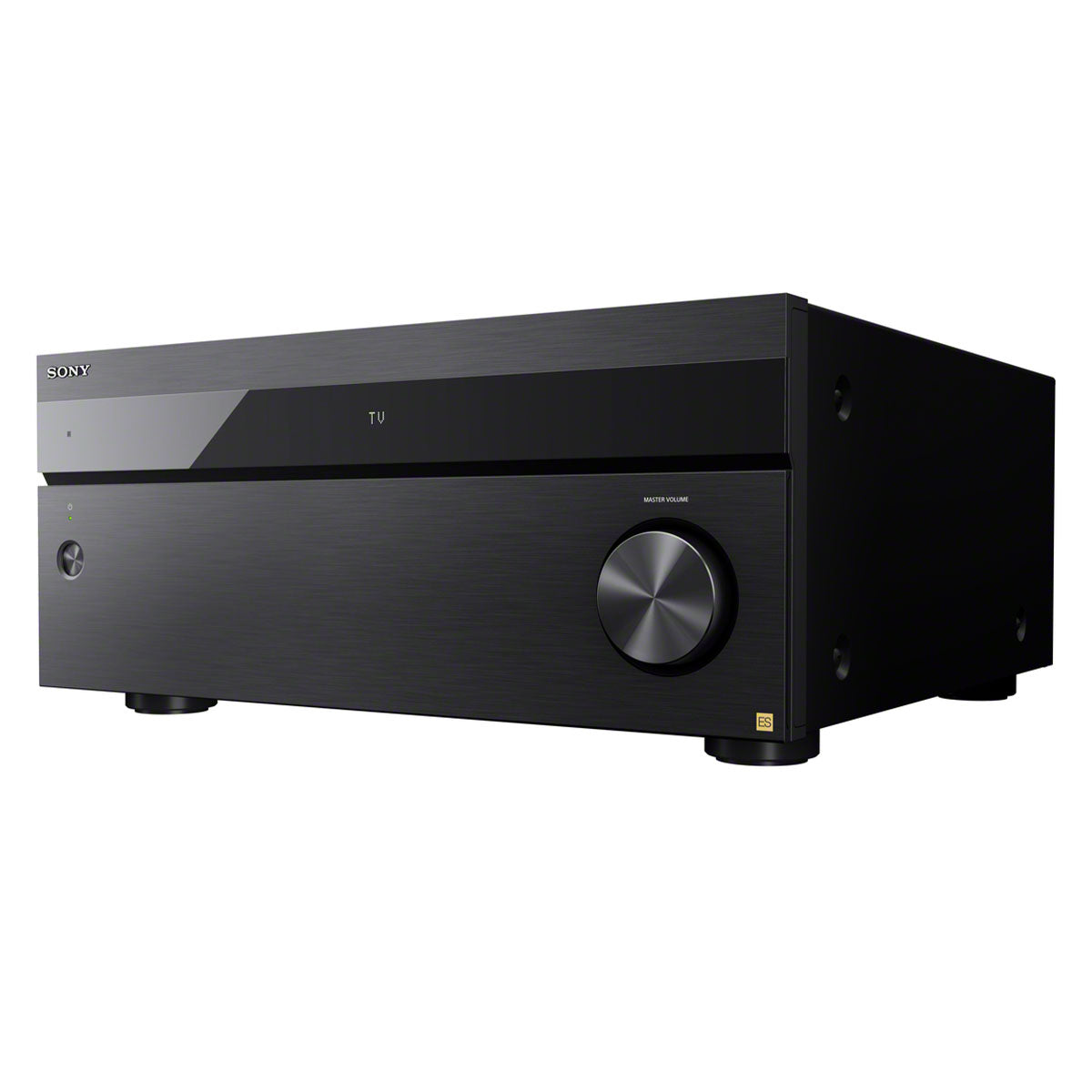

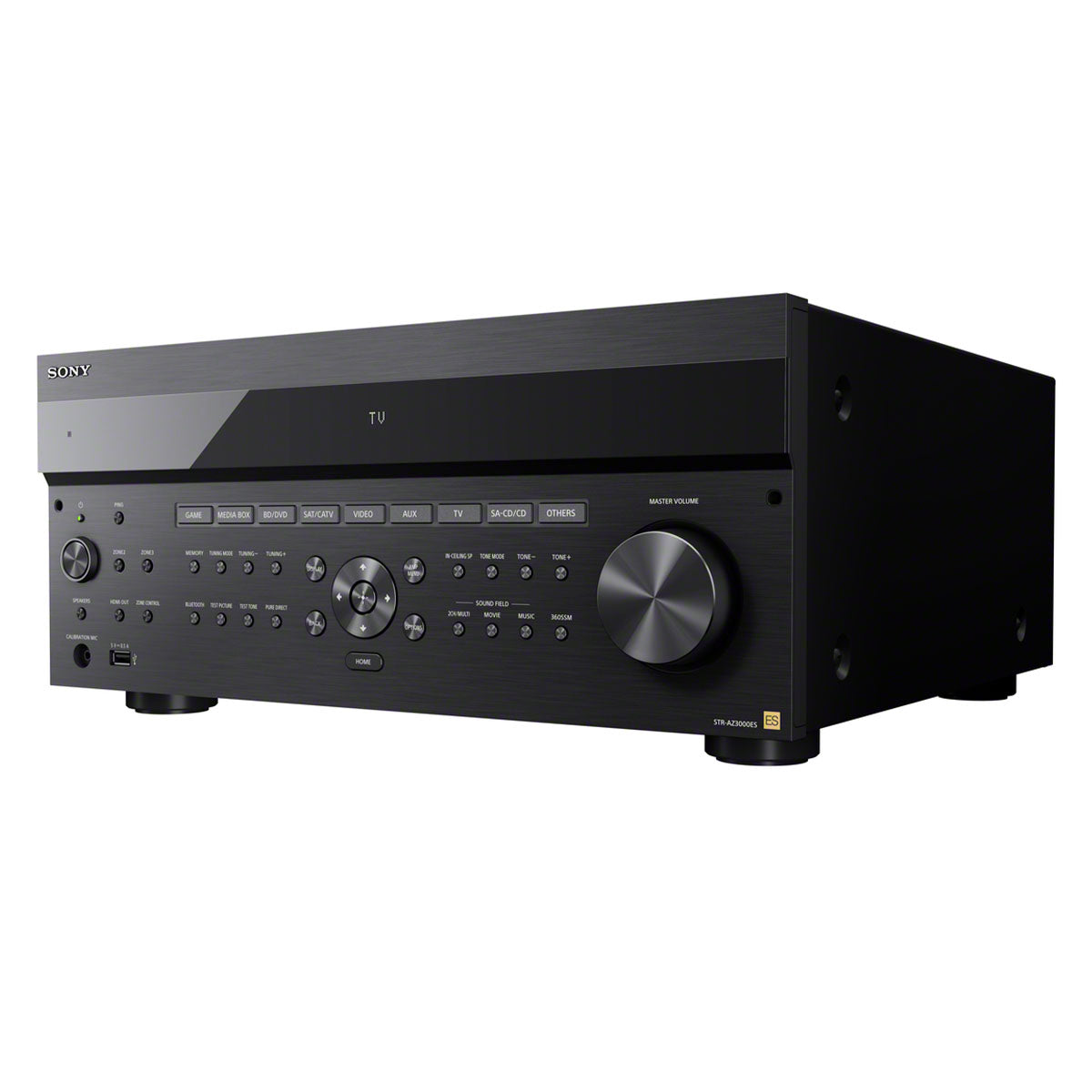
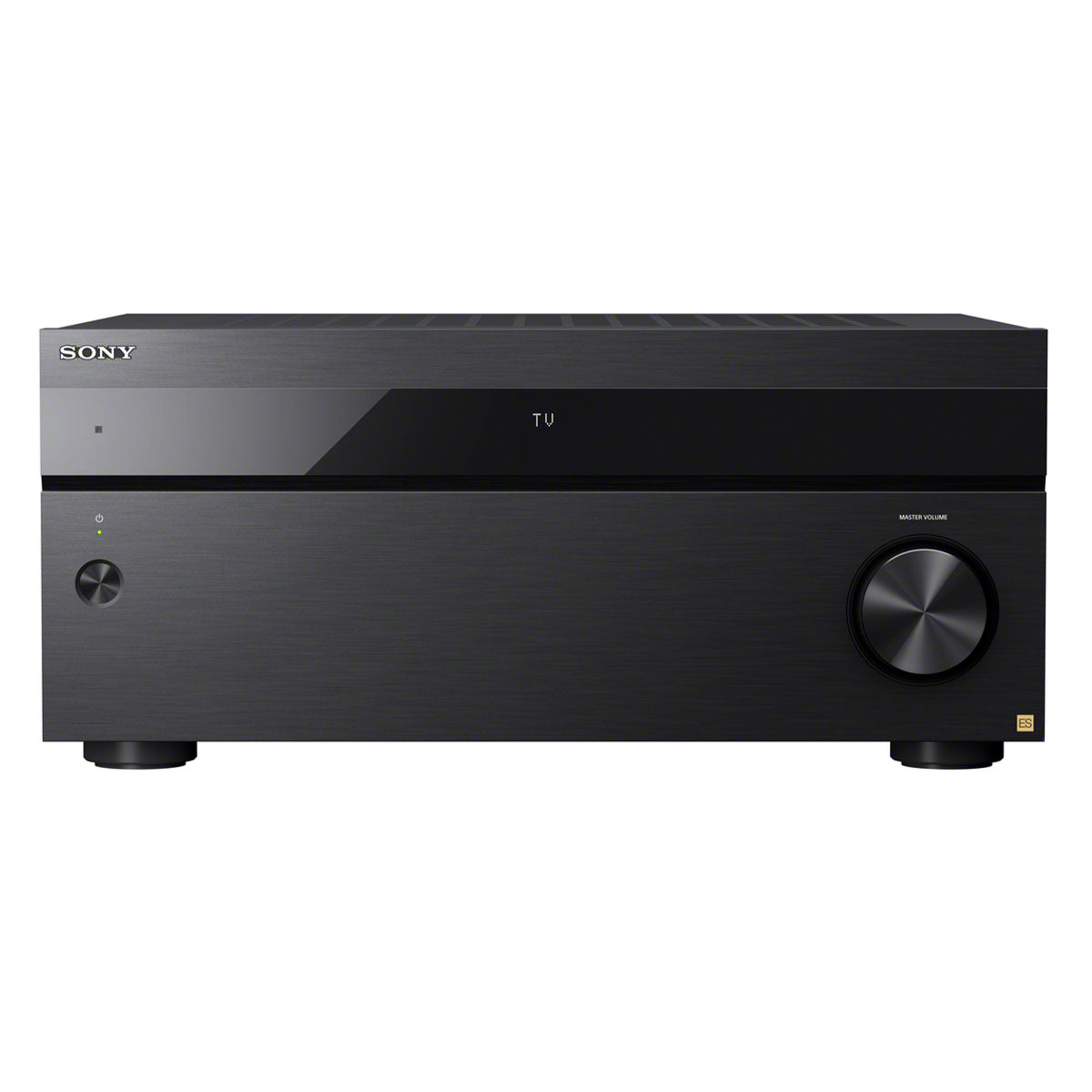
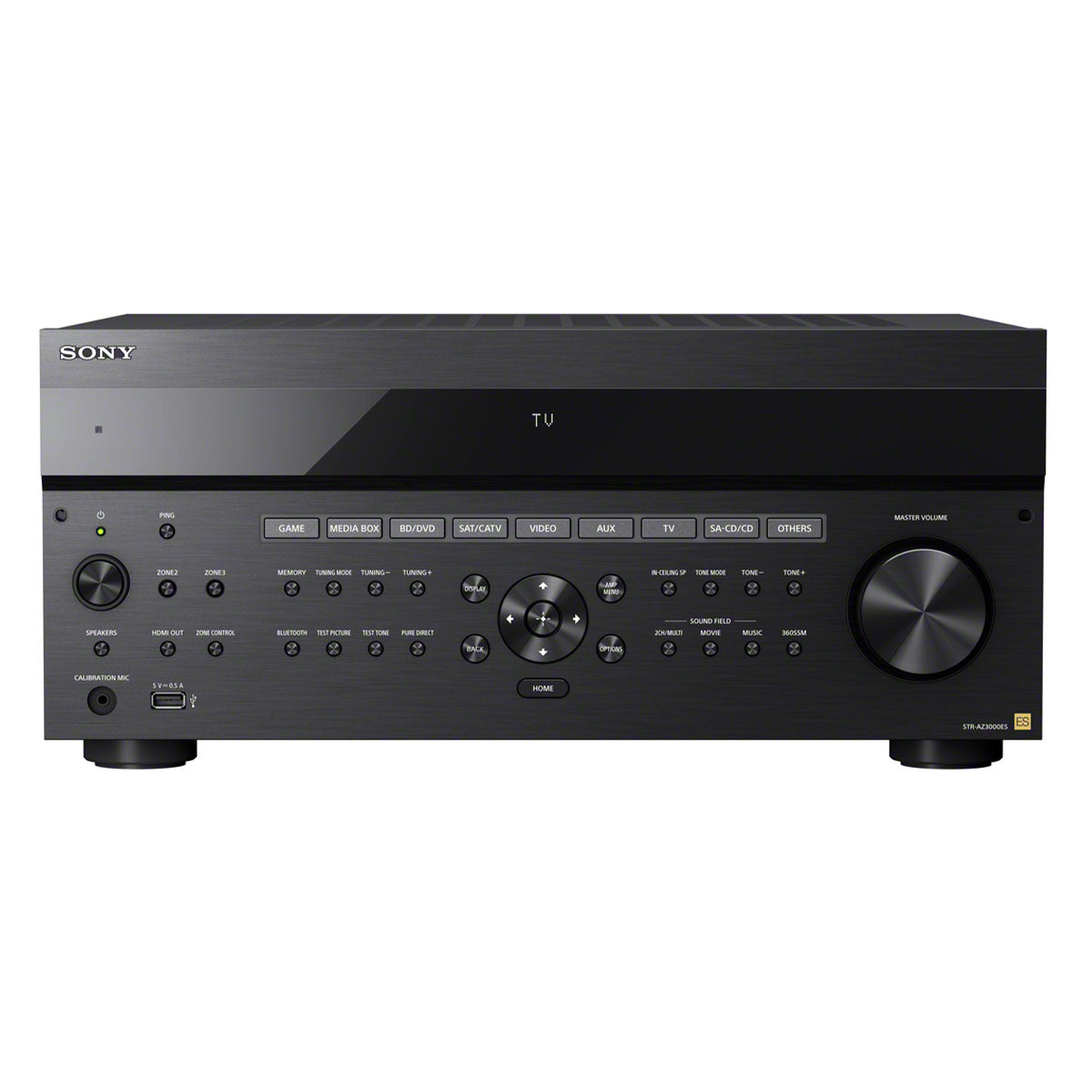

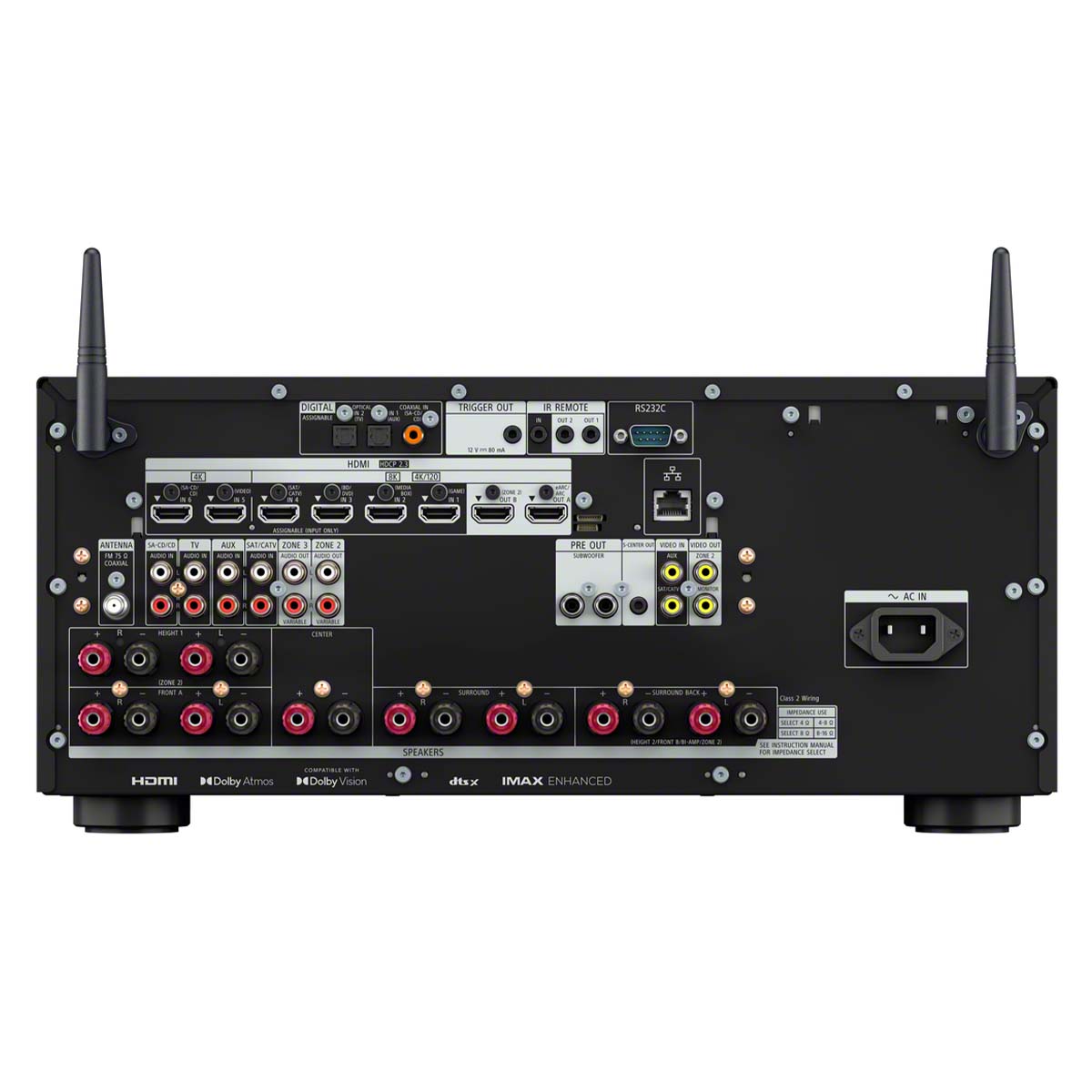
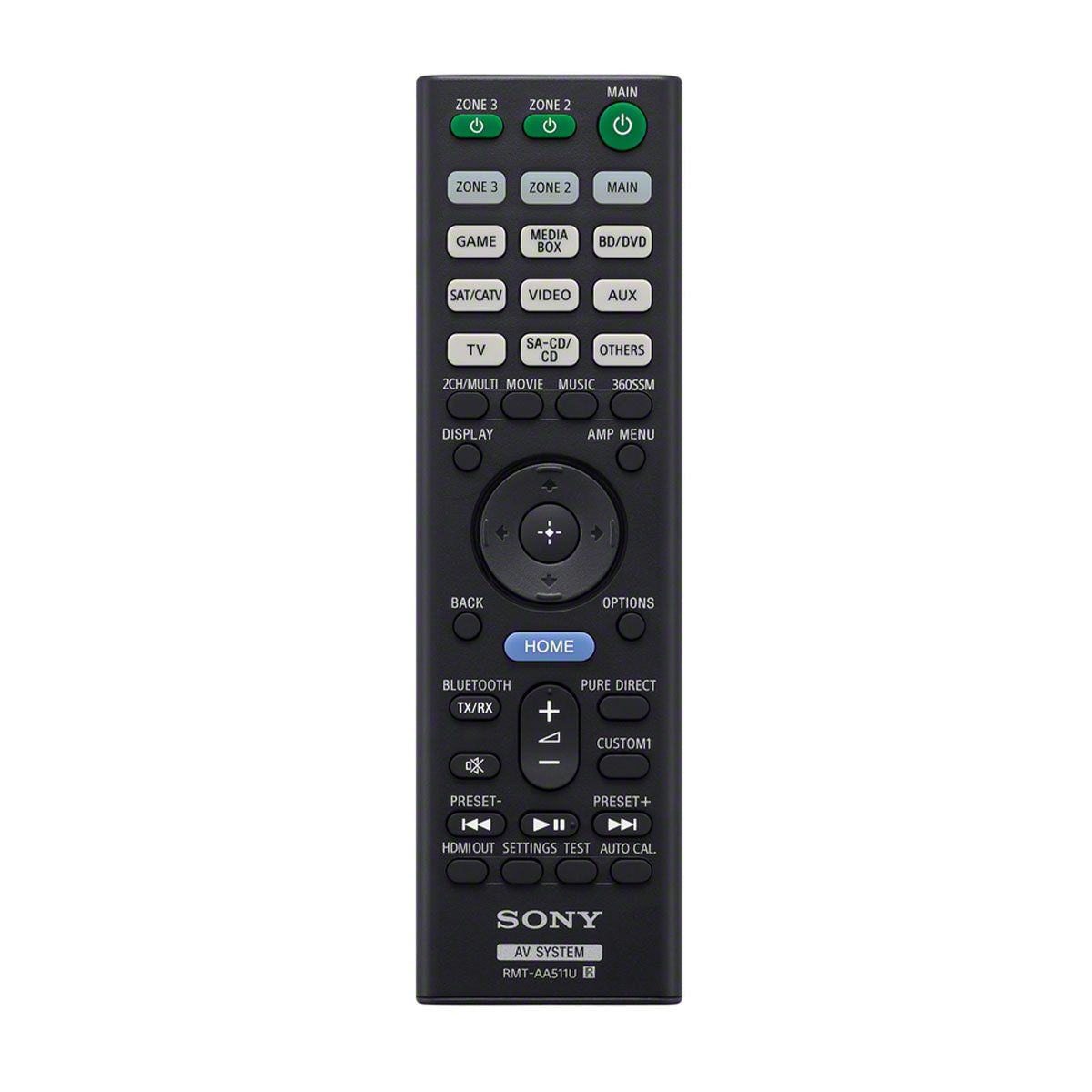
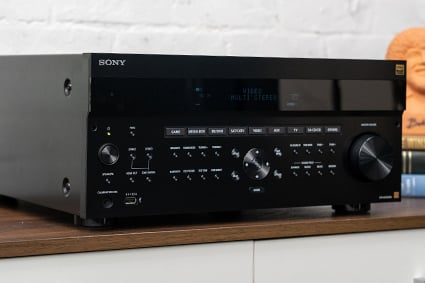
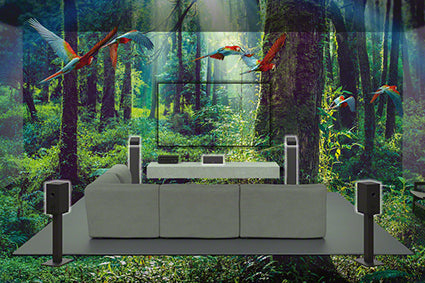











.png)
.png)
.png)
.png)
.png)
.png)
.png)
.jpg)
.jpg)
.jpg)
.jpg)
.jpg)
.jpg)
.jpg)
.jpg)
.jpg)
.jpg)
.jpg)
.jpg)
.jpg)
.jpg)
.jpg)
.jpg)
.jpg)
.jpg)
.jpg)
.jpg)
.jpg)
.jpg)
.jpg)
.jpg)
.jpg)
.jpg)
.jpg)
.jpg)
.jpg)
.jpg)
.jpg)
.jpg)
.jpg)
.jpg)
.jpg)
.jpg)